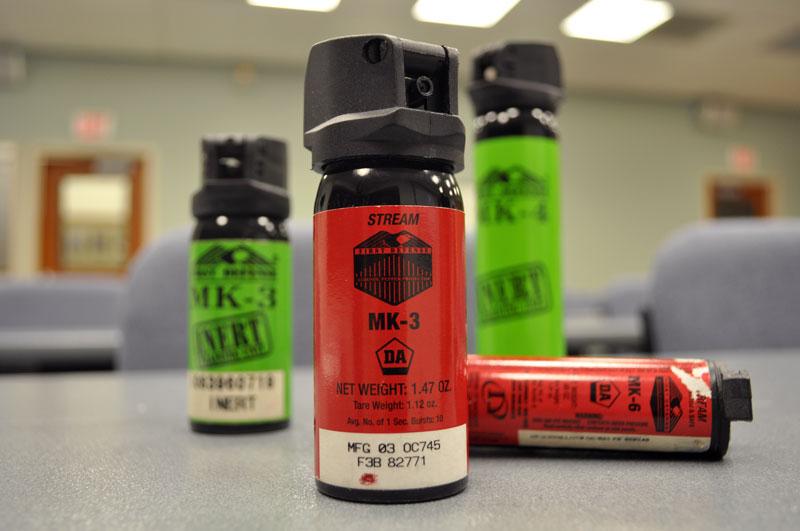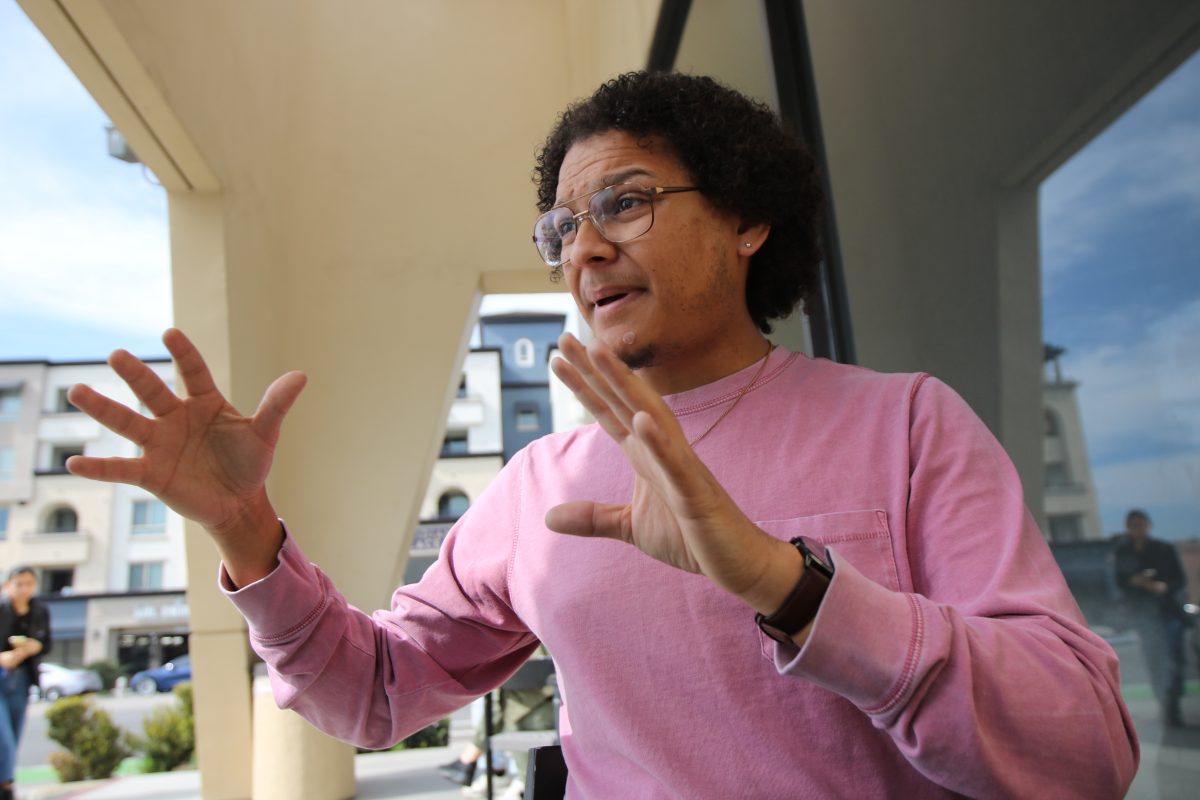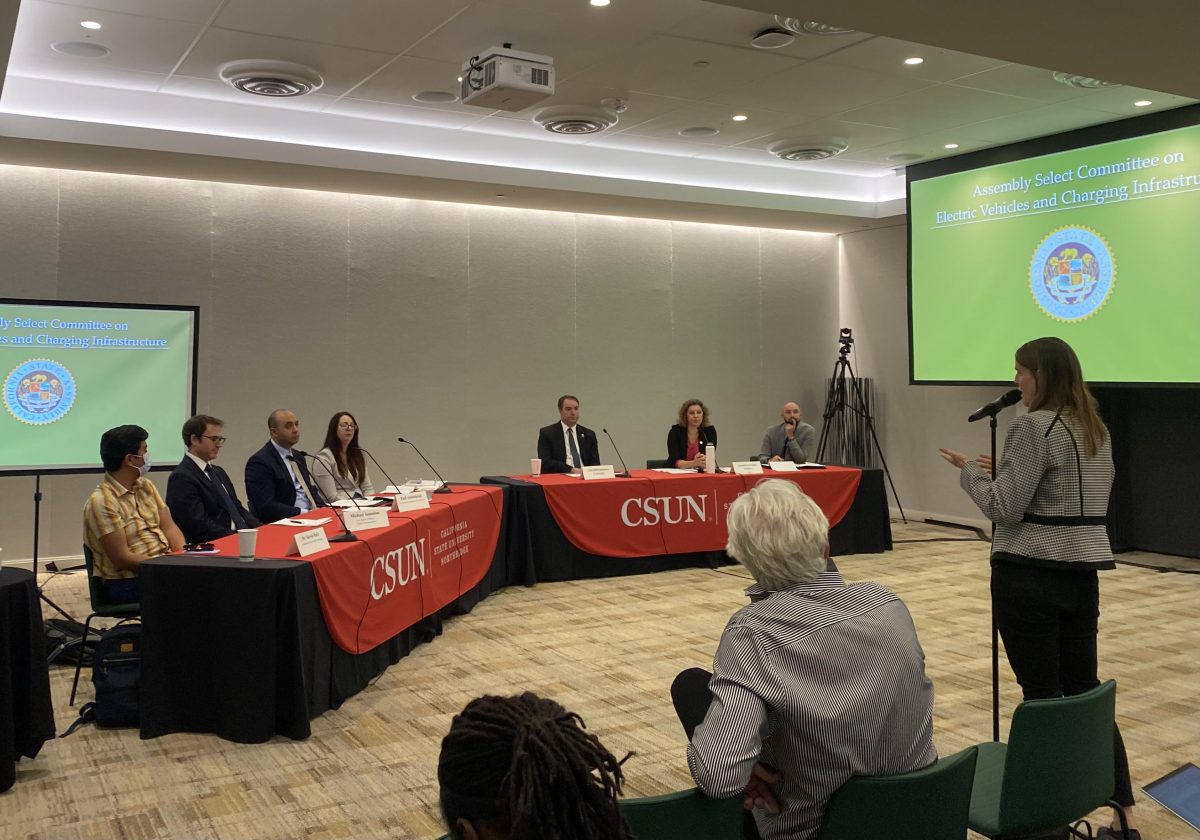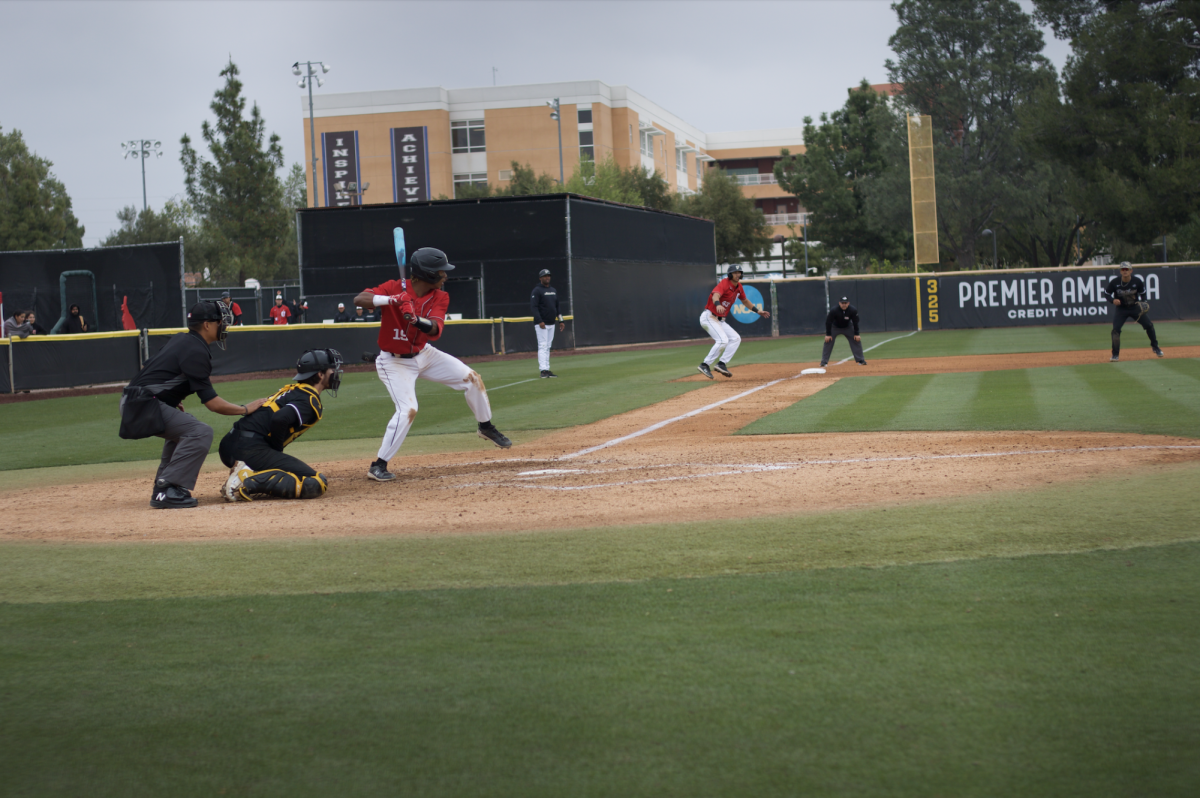The Department of Police Services offered CSUN students a “Basics of Pepper Spray Defense” presentation on Wednesday.
Students interested in learning more about self-defense can sign up for 360 Mindset, which is a class on personal safety and all around awareness to avoid crime.
Among learning basic self-defense actions with an inert canister instructed by Matador Patrol Coordinator Stacey Nowak, students learned six important learning goals regarding pepper spray use and defense: (1) legislative intent, liabilities (criminal and civil), regulation of possession and use, (2) chemical and mechanical properties, (3) psychological and physiological effects, (4) first aid and decontamination procedures, (5) maintaining, storing and disposing of, and (6) principles and limitations of use.
Andrea Klaassen, a staff member at University Advancement said she learned a lot because she knew little going in, which peaked her interest.
“I don’t know a lot about it, but I think it’s always good to at least educate yourself on self-defense and then be able to make the decision [to properly use a pepper spray],” Klaassen said.
According to Nowak, a pepper spray must be shaken to become active and depending on the spray, there are several triggering mechanisms and spray patterns.
There are five spray techniques that are to be aimed at the primary target’s face: horizontal sweep (left and right), vertical sweep (up and down), serpentine sweep (“S” pattern), circular sweep (“O” pattern), and crisscross sweep (“X” pattern). The most beneficial sweep was crisscross because either way the targets move, they will most likely be sprayed, Nowak said.
Klassen said she is thankful she has never had to use a spray and hopes she never has to.
“I’ve actually been impressed with how quick and promptly we’ve been alerted [about crime on campus],” Klaassen said. “That’s part of what makes me feel safer and more empowered, is that knowledge knowing that as soon as something happens they want to let you know about it and give you some tips on how to stay safe.”
According to an aerosol defense for citizens course reading supplement provided by Nowak, it is important to note that neither aerosol defense spray nor any other personal defense product can absolutely guarantee your safety.
In addition, a student should never use an aerosol defense spray as an offensive weapon because aerosol defense sprays are less-than-lethal weapons to be used only to defend you in warding off a personal attack.
Nowak advises students to be confident when they are up against an attacker. Always keep your head up when walking to your destination, Norwalk said.
At the end of the session, students were given the option to purchase a personal canister for six dollars.
Students are advised by the Department of Police Services to avoid unsafe areas, know their exits, surroundings, and to think ahead in order to avoid situations that will put them in peril. CSUN police may now be contacted by dialing 911 thanks to the support of the 911 Campaign.
If students would like to know more about the department’s efforts, they are welcome to stop by an open house coming up in November, according to Nowak.
Students can also visit the Department of Police Services website.
*The previous version of this article stated that Andrea Klaassen is a faculty member, but has been corrected to indicate that she is a staff member.

















